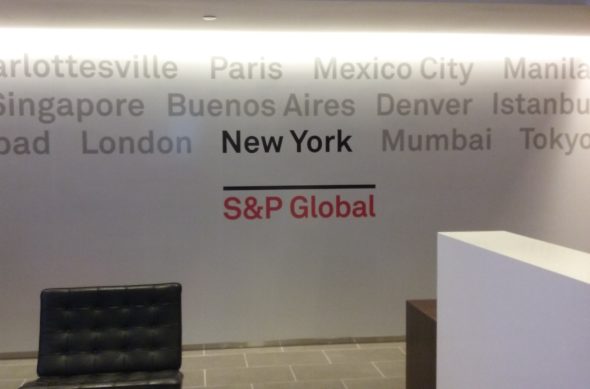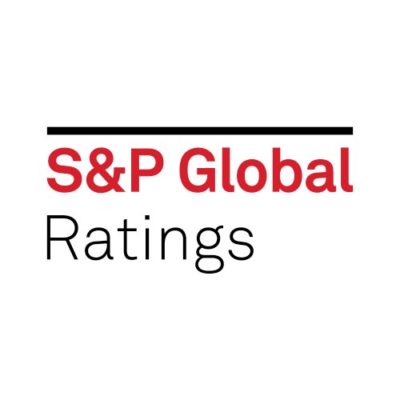Our Masters of Finance class began the day of May 19 refreshed, having gotten an extra hour of sleep the night before. Our first meeting was with Alexander Heil, the Chief Economist of the Port Authority of New York and New Jersey. The Port Authority was established in 1921 and is responsible for operating airports, tunnels and bridges, buses, PATH trains, marine terminals, and the World Trade Center Site. It is also responsible for the development of waterfronts and ports in the states of New York and New Jersey.
 We learned that their main goal is the optimization of the operation of the different modes of transportation. They operate a unique financial structure in which they are self-supporting, despite some services running at losses of almost $300 million, such as the PATH train, which is a transit service connecting northern New Jersey to lower and midtown Manhattan.
We learned that their main goal is the optimization of the operation of the different modes of transportation. They operate a unique financial structure in which they are self-supporting, despite some services running at losses of almost $300 million, such as the PATH train, which is a transit service connecting northern New Jersey to lower and midtown Manhattan.
The objective of this organization is to provide services to the people without worrying too much about losses, because the alternative would be to cease offering such services, which would deny the people an important transit service. The revenues of the Port Authority from aviation and from operating bridges and tunnels (tolls) more than offsets the deficit.
We also gained insight into the daily operations of the Port Authority and learned that they are one of the largest issuers of long-term municipal bonds as a way to finance their infrastructure projects, with their most recent issuance being for the renovation of LaGuardia Airport.
The Port Authority is faced with a unique dilemma: making projections for such large scale projects involves modeling revenues and expenses for periods of almost 15 years, and taking into consideration that each project, such as a bridge or tunnel will provide service for around 100 years. As a result, the reliability of the numbers comes into question. Making the situation more complex is the fact that economic conditions and trends such as demographics can change vastly in a short time period, thus rendering infrastructure capacities useless.
In the end, we understood how important it is for services and functions that are in essence monopolies to be run by governments in order to avoid exploitative price increases and how an entity such as the Port Authority provides an invaluable service to the people that is so deeply ingrained into their day to day lives.
 In the afternoon, we went to Standard & Poor’s (S&P) Global Ratings, which is one of the most well-known brands in the credit rating business. Located in downtown Manhattan, S&P Global plays a major role in the entire financial ecosystem.
In the afternoon, we went to Standard & Poor’s (S&P) Global Ratings, which is one of the most well-known brands in the credit rating business. Located in downtown Manhattan, S&P Global plays a major role in the entire financial ecosystem.
John Newcomb, Director of Ratings Analytical Training, walked us step-by-step through the ratings procedure. He talked about S&P Global’s mission and values, S&P Ratings’ leadership, the ratings criteria framework, and credit risk dimensions.
Next, Satyam Panday, the US economist, talked about US economic outlook macros. He mentioned the impending interest rate hikes and conducted a poll about their likelihood. After that, we participated in a panel discussion with Weili Chen (Senior Director in Structured Finance), Laurence Hazell (Governance Specialist), Eden Perry  (Director in US Public Finance), and James Fielding (Senior Director in Corporate and Government Ratings).
(Director in US Public Finance), and James Fielding (Senior Director in Corporate and Government Ratings).
We discussed in detail the causes for Puerto Rico’s recent municipal bond default, the impact of the financial crisis on the ratings procedure, and how there is greater transparency now than ever before. They fielded questions about industry ratings, rating independence, and when and how S&P adjusts ratings.
All in all, the meeting really helped us get a 360-degree view of the Financial Crisis of 2008.
 Later in the afternoon, we met with Bob Eick, Partner at Waterfall Asset Management. He started the discussion by asking the class what we knew about hedge funds. Being the good masters of finance students that we are, we shouted out conventional answers, such as “rich, mysterious, and unregulated”.
Later in the afternoon, we met with Bob Eick, Partner at Waterfall Asset Management. He started the discussion by asking the class what we knew about hedge funds. Being the good masters of finance students that we are, we shouted out conventional answers, such as “rich, mysterious, and unregulated”.
Bob went on to explain that one of the reasons why hedge funds are an attractive asset class to invest in is due to their greater returns as compared to traditional asset classes. However, along with greater returns came greater risk and greater losses.
Bob’s hedge fund invests in distressed debt and collateralized debt. Bob touched upon which entities invest in hedge funds–specifically, sophisticated investors, institutions, foreign sovereign wealth funds, and pension funds. He went on to describe the number of asset classes within the hedge fund, managing risk, and how to differentiate between hedge funds. Furthermore, he instructed the students to write down one important message: that all hedges have thorns, meaning hedging comes with a large cost and it is vital that the benefits outweigh the costs when utilizing a hedging strategy. Furthermore, Bob compared leverage to the boogieman. He said using too much leverage was a sure way to achieve losses and that it was possible to achieve consistent returns without using leverage.
Bob’s parting remark was especially memorable: “I enjoyed speaking with you today and I wish you guys a failure, reminding us that the best learning experiences come from failures.”

Xi’an Famous Foods, a small chain of fast food restaurants located all over New York City, serve authentic western Chinese dishes. Jason Wang, BSBA’09, CEO of Xi’An Famous Foods, has opened eleven branches within New York City.
Jason Wang shared an inspiring story of how he was able to create a successful chain in New York City, a city that is flooded with small restaurants on every street. Our Master of Finance class learned of the obstacles faced by Jason when establishing and developing his business in a highly competitive city, especially as a foreigner. It was amazing to hear how he left his decent-paying job to pursue his dream of opening his own business. We hope Jason can continue to expand his restaurant business in the United States.
Guest Bloggers: Zhe Yu, Prerna Gulati, Aneesha Patel, Qingchun Wu (GMF 2016)
This is part of a series of blogs chronicling the experiences of 41 Global Master of Finance (GMF) dual degree students during their two week long immersion course in New York and Washington, DC. Each blog will be written by a small subset of students during their experience.



